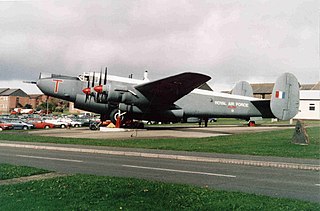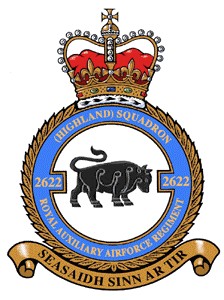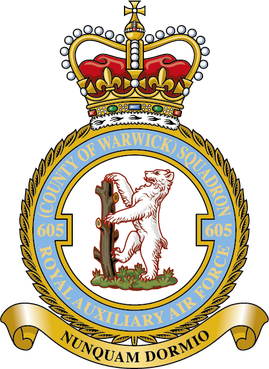
The Royal Air Force Regiment is part of the Royal Air Force and functions as a specialist corps. Founded by Royal Warrant in 1942, the Corps carries out basic security tasks relating to the [protection of] delivery of air power. Examples of such tasks are non-combatant evacuation operation (NEO), recovery of downed aircrew, defence of airfields by way of aggressively patrolling and actively seeking out infiltrators in a large area surrounding airfields. The key tenet of the RAF Regiments role is based around defensive security operations, rather than the Army’s more traditional offensive infantry role, which is to close with and kill the enemy; notwithstanding, this does require active patrolling just outside the Airfield perimeter. In addition the RAF Regiment provides Joint Terminal Attack Controllers (JTACs) to the British Army in the Tactical Air Control Party (TACP) role, and provides a very small commitment to the Special Forces Support Group as Tactical air controllers and some CBRN specialists.

Royal Air Force St Mawgan or more simply RAF St Mawgan is a Royal Air Force station near St Mawgan and Newquay in Cornwall, England. In 2008 the runway part of the site was handed over to Newquay Airport. The remainder of the station continues to operate under the command of the RAF. RAF St Mawgan used to have the widest military runway in the UK (300 ft) and was the home of the Cornwall Air Ambulance service and more recently 505 (Wessex) Squadron Royal Auxiliary Air Force (RAuxAF).

No. 2 Group is a group of the Royal Air Force which was first activated in 1918, served from 1918–20, from 1936 through the Second World War to 1947, from 1948 to 1958, from 1993 to 1996, was reactivated in 2000, and is today part of Air Command.

The Royal Auxiliary Air Force (RAuxAF), formerly the Auxiliary Air Force (AAF), together with the Air Force Reserve, is a component of His Majesty's Reserve Air Forces. It provides a primary reinforcement capability for the regular service, and consists of paid volunteers who give up some of their weekends, evenings and holidays to train at one of a number of squadrons around the United Kingdom. Its current mission is to provide trained personnel in support of the regular RAF.

No. 607 Squadron is an auxiliary squadron of the Royal Air Force. It was formed in 1930 as a bomber unit in the Auxiliary Air Force and changed in 1936 to the fighter role. It fought in that role during the Second World War in Europe and Asia. After the war, in 1946, the squadron reformed as a fighter unit. Awarded the title Royal Auxiliary Air Force by King George in 1947, 607 Sqn was disbanded with all the other flying units of the RAuxAF on 10 March 1957. It reformed on 5 January 2015, as a General Service Support Squadron (GSS).
No. 666 Squadron AAC (V) is a former squadron of the British Army's Army Air Corps (AAC). It was previously No. 666 Squadron RAF, a unit of the Royal Air Force during the Second World War and afterwards became a Royal Auxiliary Air Force (RAuxAF) squadron between 1 May 1949 and 10 March 1957.
The Royal Air Force Volunteer Reserve (RAFVR) was established in 1936 to support the preparedness of the U.K. Royal Air Force in the event of another war. The Air Ministry intended it to form a supplement to the Royal Auxiliary Air Force (RAuxAF), the active reserve for the RAF, by providing an additional non-active reserve. However during the Second World War the high demand for aircrew absorbed all available RAuxAF personnel and led the RAFVR to quickly become the main pathway of aircrew entry into the RAF. It was initially composed of civilians recruited from neighbourhood reserve flying schools, run by civilian contractors with largely RAF-trained flying instructors as well as other instructors in related air war functions, such as observers and wireless operators.

No. 2622 (Highland) Squadron RAuxAF Regiment, is a Royal Auxiliary Air Force RAF Regiment reserve squadron based at RAF Lossiemouth. It is the northernmost RAuxAF Unit in the United Kingdom and was formed in 1979 to assist with the ground defence of that airfield. Initially, personnel were recruited solely from the local area but recruiting now extends as far south as Edinburgh and Glasgow and to the North, East and West Coasts of Scotland. The Squadron is established for 116 Auxiliary personnel plus a small contingent of regular RAF personnel.

No. 611 Squadron is a British Royal Air Force squadron. It was first formed in 1936 and was disbanded in 1957 after seeing combat as a fighter unit during the Second World War. It was reformed as a reserve squadron in 2013.

No. 605 Squadron was formed as an Auxiliary Air Force Squadron. Initially formed as a bomber unit, it became a fighter squadron prior to the Second World War and was one of the most successful participants of the Battle of Britain. It also had the distinction of being active during the war on two fronts at the same time, when the squadron was split up between Malta and the Dutch East Indies. In its last incarnation as an active flying unit, the squadron served as the first jet fighter unit in the post-war Royal Auxiliary Air Force; 616 having already flown Gloster Meteors during the war. No. 605 Squadron was reformed as a RAuxAF Logistic Support Squadron (LSS) on 1 Nov 2014 within No. 85 Expeditionary Logistics Wing of the RAF A4 Force. On the 1 January 2019, the Reserve Logistic Support Wing (RLSW) was established with 501, 504 and 605 LSS Squadron's moving from No. 85 Wing RAF to form RLSW.
No. 7010 (VR) Photographic Interpretation Squadron, Royal Auxiliary Air Force is a unit of the British Royal Air Force. It was founded in April 1953 as No. 7010 Flight, Royal Air Force Volunteer Reserve, to provide strategic imagery analysis support to the Royal Air Force. In 1965 the flight expanded its role to include tactical imagery analysis. In August 1982, Her Majesty The Queen approved the issue of a badge to the flight. In allusion to the unit's role, the emblem of a human eye is portrayed with a wing embellishment and set in front of a roundel. The motto Vocati Veniemus may be freely translated as "when summoned we shall be there". The collapse of the Warsaw Pact resulted in a large reduction of NATO forces in central Europe. In turn this has led to a major reduction in, and reorganisation of, the United Kingdom's regular and reserve forces. Within this overall plan for defence, No. 7010 Flight became No. 7010 (VR) Photographic Interpretation Squadron.

The Royal Air Force College (RAFC) is the Royal Air Force academy which provides initial training to all RAF personnel who are preparing to become commissioned officers. The College also provides initial training to aircrew cadets and is responsible for all RAF recruiting along with officer and aircrew selection. Originally established as a naval aviation training centre during World War I, the College was established as the world's first air academy in 1919. During World War II, the College was closed and its facilities were used as a flying training school. Reopening after the War, the College absorbed the Royal Air Force Technical College in 1966.
No 3Police Squadron formed as a consequence of the assumptions made in the Strategic Defence Review, presented to Parliament by the Secretary of State for Defence in July 1998. The SDR recognised that deployed air operations are likely to take place at the end of a long supply chain or line of communication. Control of this line of communication is a task which falls to the service military police organisations: The Royal Air Force Police and the Royal Military Police. To undertake this expanded task, the establishment of the RAF Police was increased by a number of both regular personnel and reservists. After a study, it was decided that the most effective way for the reservists to be formed was as members of the Royal Auxiliary Air Force. These personnel would then be integrated with the existing Tactical Police and Security Squadron to form Tactical Police Wing. Recruiting for 3 Police Squadron began in earnest in October 2002.

No. 600 Squadron Royal Auxiliary Air Force is a squadron of the RAF Reserves. It was formed in 1925 and operated as a night fighter squadron during the Second World War with great distinction. After the war, 600 Squadron went on to operate jet fighters until 1957. Reactivated in 1999, 600 Squadron is the only RAF Reserve unit within the M25. It is a Headquarters Support Squadron and provides trained part-time reservists to support RAF operations around the world.
No. 2623 Squadron RAuxAF Regiment is a Royal Auxiliary Air Force RAF Regiment reserve squadron based at RAF Honington. It was formed on 1 July 1979 to provide ground defence of the station. Tasked with preventing Soviet Special Forces from disrupting flying operations, personnel were recruited from across East Anglia and formed an integral part of the station's war-fighting capability for the next 15 years. Throughout this period, the squadron participated in many exercises and held annual camps in the United Kingdom, Germany and Gibraltar, winning the Strickland Trophy competition in 1991.
No. 2620 Squadron RAuxAF Regiment is a Royal Auxiliary Air Force RAF Regiment reserve squadron based at RAF Marham, in Norfolk.
No. 2503 Squadron RAuxAF Regiment is a Royal Auxiliary Air Force RAF Regiment reserve squadron based at RAF Waddington, in Lincolnshire. Gunners are recruited both from ex-regulars in the RAF Regiment and civilians in a 50 miles radius surrounding RAF Waddington. The squadron is in the dismounted close-combat force protection role.
At the end of the Cold War in 1989, the Royal Air Force (RAF) structure was as follows:

This is the structure of the Royal Air Force.
No. 7006 Intelligence Squadron RAuxAF is a specialist intelligence unit of the Royal Air Force's reserve component, the Royal Auxiliary Air Force. Since 1997, the squadron has been the only dedicated reserve intelligence squadron in the RAF.











